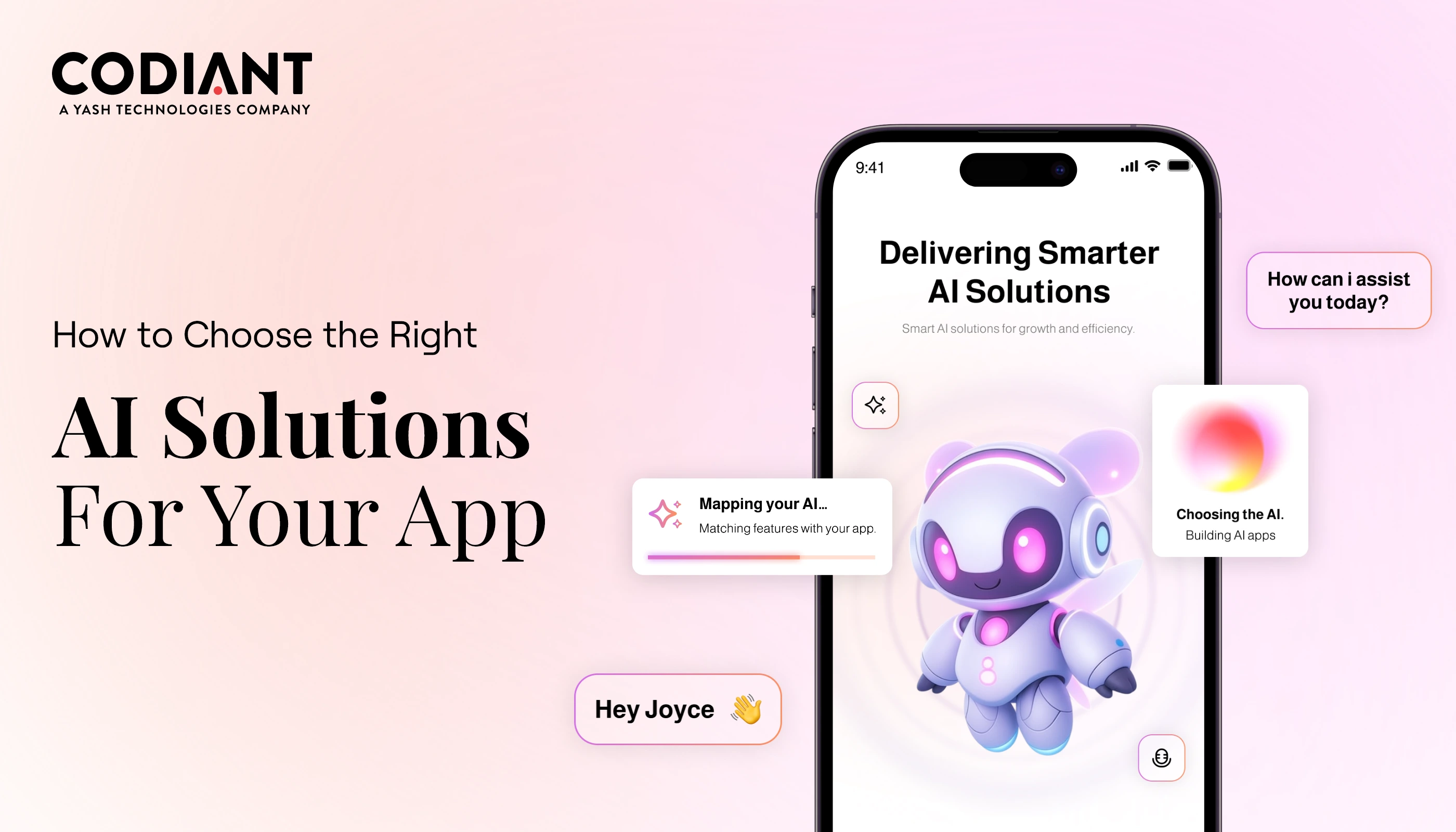Benefits of Using Synthetic Data for Your Business
Table of Contents
Subscribe To Our Newsletter

Today, businesses use data as their guide for decisions, strategies, and new ideas. But finding good data for analysis can be tricky, especially when we need to keep private info safe. That’s where synthetic data steps in. It’s like a pretend version of real-world data.
It has been created artificially to mimic the patterns and relationships in real data, but without any secret details. This makes it a handy tool for businesses to test and improve their systems without worrying about security.
Data is a big deal for modern businesses. It helps them figure out what customers want and keeps them on track with changes in the market. Having the right data isn’t just about making plans; it’s about making things work better and staying ahead of the competition.
Synthetic data can be really helpful for your business. It solves problems with data and privacy, which makes it a great tool for analyzing your business. Curious to know more? Keep reading…
Understanding Synthetic Data
What is Synthetic Data?
Alright, let’s talk about how synthetic data is made. Think of it like this: An artist who doesn’t always paint things they see in real life. Sometimes, they make up new scenes using their imagination. Synthetic data works a bit like that. Instead of using actual data, it makes new data that looks a lot like the real stuff.
Data Snapshots
Market Growth: The worldwide synthetic data market is expected to reach $4.56 billion by 2024, growing at a fast rate of 32.1%. The Asia-Pacific region is leading this growth, especially in finance, healthcare, and e-commerce.
Industry Adoption:
- Finance: 80% of institutions use synthetic data for fraud detection.
- Healthcare: 60% considering it for clinical trials and disease surveillance.
- Retail: 75% of e-commerce uses it for customer insights.
Business Benefits: Synthetic data offers a triple advantage: up to 70% cost reduction, faster data preparation, testing, and development, and privacy-conscious innovation.
How is Synthetic Data Generated?

Synthetic data is made by computer programs using special methods and rules. These tools copy the patterns we see in real data, kind of like using a stencil to make the same design over and over. What’s interesting is that even though synthetic data seems real, it doesn’t have any real details about people or events. So, it’s safe to use without worrying about privacy issues.
Here are common methods widely used to create accurate synthetic datasets:
1. Sampling from distributions: This is a simple way to make synthetic data. You first look at the stats of your real data, like the average and range. Then, you use tools like NumPy to pick random values that fit those stats. This is good for making simple table data.
2. Generative models: Modern digital systems increasingly rely on intelligent models capable of learning patterns from real-world data and generating new, meaningful outputs. These advanced technologies—powered by generative AI development solutions, enable businesses to create high-quality synthetic data, automate creative tasks, and enhance product innovation. Below are some of the most widely used tools in this space:
- Variationally Autoencoders (VAEs): These tools take real data and change it into a hidden form. Then, they change it back into data, making new data points. It’s like taking a picture, drawing it, and then making a new picture from the drawing.
- Generative Adversarial Networks (GANs): These tools have two parts that compete with each other. One part makes data, and the other part tries to tell if the data is real or fake. This helps the tool make more and more realistic synthetic data.
3. Tools and platforms:
There are many online tools and platforms that make synthetic data generation easier, especially for table data. These platforms often have easy-to-use interfaces and built-in tools, making it easier for people who aren’t tech experts to make synthetic data. Examples include MOSTLY AI and Datasynth.
Here are some extra points to think about when choosing a method:
- Type of data: Different methods are better for different types of data (like tables, text, images).
- Complexity: Simpler methods might not capture complex relationships in the data, while advanced models need more tech skills.
- Control and customization: Some methods let you control specific parts of the generated data, like data privacy or specific relationships.
No matter what method you choose, remember to:
- Define your specific needs: What type of data do you need, and what properties should it have?
- Validate the generated data: Make sure the synthetic data looks like the real data’s characteristics and does what you need it to do.
- Check for privacy considerations: Make sure your synthetic data generation method doesn’t break any privacy rules.
In essence, the creation of synthetic data is like being an artist in the data world. Tools and techniques are used to craft data that’s not only useful but also respects privacy. Quite fascinating, isn’t it?
Why Your Business Needs Synthetic Data?
Making the right decisions at right time in business world can lead to success. Here’s how synthetic data can be really helpful:
1. Speeding Up Innovation:
Synthetic data is like a sandbox for new ideas. It lets your team try out new things, build prototypes, and improve models without worrying about not having enough real data or dealing with sensitive information. This speeds up the process of coming up with new ideas, making your business more flexible and quicker to adapt with digital transformation.
2. Solving Privacy Issues:
Privacy is really important, especially now that there are a lot of rules about data. Synthetic data lets you make realistic datasets without using any private information. This is really useful when you’re working with sensitive information because it makes sure you’re following data protection rules.
3. Cost-Efficient Testing and Development:
Testing and developing systems can use up a lot of resources. Synthetic data helps cut down costs by providing a cheaper way to experiment. You can improve algorithms, train models, and check performance without the high costs of dealing with a lot of real data.
4. Making Data More Diverse:
Real-world datasets often lack diversity, leading to biased predictions and unreliable model outcomes. By generating synthetic data, businesses can simulate countless scenarios, strengthen model accuracy, and reduce operational risks. When combined with robust data management services, synthetic data becomes an even more powerful asset, helping organizations build scalable, adaptable, and bias-resistant AI systems that perform consistently across real-world conditions.
5. Future-Proofing Against Data Scarcity:
Sometimes, you might not be able to get enough high-quality real-world data. Synthetic data acts as a backup plan, making sure your operations and innovations can keep going smoothly even when it’s hard to get enough real data.
Myth vs Facts: Synthetic Data
Myth 1: Synthetic data is just made-up numbers – it can’t be trusted.
Fact: Synthetic data is meticulously generated using algorithms and real-world data patterns. It can be highly accurate and statistically representative, making it a valuable tool for training AI models, testing scenarios, and protecting sensitive customer information.
Myth 2: Using synthetic data is illegal – it violates privacy laws.
Fact: While privacy regulations are evolving, synthetic data is generally considered legal when generated responsibly. Techniques like anonymization and differential privacy can ensure data privacy while preserving its usefulness.
Benefits of Using Synthetic Data
1. Privacy and Rules: Synthetic data helps businesses deal with privacy worries and follow data protection rules like GDPR and HIPAA. Since synthetic data is made, not collected, it doesn’t have any real person’s private info, keeping data private and following rules.
2. Cost-Effectiveness: Getting and managing real-world data can be expensive, especially with lots of data or sensitive info. Synthetic data is a cheaper option, cutting down costs linked to getting, storing, and looking after data.
3. Lots of Different Data: Making synthetic data lets businesses create a wide range of scenarios, edge cases, and variations that might not be in real-world datasets. This variety can make AI/ML models stronger and more general.
4. Overcoming Data Scarcity: In many industries, getting enough real-world data for specific uses can be hard because of limited availability or rules. Synthetic data solves this problem by making tailored datasets to help develop and test AI/ML applications.
5. Quick Development and Testing: Making synthetic data can speed up the development and testing stages of AI/ML projects. It gets rid of the need to wait for real data and can speed up the process for improving and checking models.
6. Safe Experimentation: Synthetic data lets businesses try out and fine-tune AI/ML models without the risks linked to using real data, like accidentally exposing sensitive info or unintended biases.
7. Better Security: Since synthetic data doesn’t have real info, there’s a lower risk of data breaches or unauthorized access. It adds an extra layer of security for businesses working with AI/ML models.
Difference Between Synthetic Data and Real Data

Aspect |
Real Data |
Synthetic Data |
| Origin and Generation | Collected from real-world observations | Artificially generated |
| Privacy and Sensitivity | May contain sensitive information | Can be designed to preserve privacy |
| Use Cases | Used for understanding real-world phenomena, predictions, insights | Used in scenarios with limited access to real data, testing algorithms |
| Data Quality | Depends on the accuracy of the data collection process | Depends on the effectiveness of the data generation process, can be high quality if accurately mimics real data |
| Bias and Representation | May have existing unfairness or prejudices | Can be designed to be fair and unbiased |
| Cost and Availability | Can be expensive and time-consuming | Can be generated relatively quickly and at a lower cost |
| Versatility | Reflects real-world complexity and variability | Can be tailored for specific scenarios, lacks real-world intricacies |
| Learning Impact | Directly impacts models with real-world nuances | Useful for training models when real data is scarce or sensitive |
| Ethical Considerations | Requires careful handling due to privacy and ethical concerns | Offers a privacy-preserving alternative, potentially reducing ethical concerns |
Which Industries Are Benefiting from Synthetic Data?

Highly Regulated Industries
- Finance and Insurance: Synthetic data helps find fraud, assess risk, and simulate markets without revealing customer details.
- Healthcare: Fake medical data helps with clinical trial simulations, personalized medicine research, and disease tracking while keeping patient details private.
Data-Driven Industries
- Retail and E-commerce: Businesses use synthetic data for grouping customers, predicting demand, testing changes, and improving user experience. This leads to better marketing and happier customers.
- Automotive and Manufacturing: Synthetic data is important for training self-driving cars, designing and testing products, and predicting maintenance. This makes things safer, more efficient, and more innovative.
Other Promising Areas
- Media and Entertainment: Synthetic data can create realistic visual effects, fill up virtual worlds, and personalize content.
- Telecommunications: Fake datasets made from real data can be used for improving networks, finding fraud, and better customer service.
- Social Media: Platforms can use synthetic data to personalize user feeds, fight fake news, and protect user privacy.
Now, let’s look at some companies that have found success with synthetic data:
- Amazon: Amazon uses synthetic data to teach Alexa how to understand language.
- Waymo: Waymo, which is owned by Google, uses synthetic data to teach its self-driving cars.
- Anthem: Anthem, a health insurance company, works with Google Cloud to create synthetic data.
Potential Challenges in Using Synthetic Data
- Quality Check: It’s hard to make sure that the synthetic data is as good as real data. If it’s not, it might lead to wrong decisions.
- Cost: Creating synthetic data can be expensive. It needs special tools and experts who know how to use them.
- Privacy Issues: Even though synthetic data is supposed to protect privacy, if not done properly, it might still leak some private information.
- Regulations: There are laws about data usage. Businesses need to make sure they follow these laws when using synthetic data.
- Training Needs: Your team might need to learn new skills to work with synthetic data. This takes time and effort.
How Can Codiant Help you with Synthetic Data Modelling?
As digital data demand rises, using synthetic data opens doors for advanced AI training without violating privacy. The emerging synthetic data economy promises positive impacts across industries. Early adoption ensures faster AI system development and business growth. Codiant offers expert data scientists and AI/ML teams to bring your vision to life. Contact us to explore more possibilities!
Featured Blogs
Read our thoughts and insights on the latest tech and business trends
How to Choose the Right AI Solutions for Your Existing App
- December 1, 2025
- Artificial Intelligence
Businesses today are under pressure to move faster, deliver personalized experiences, and operate with greater accuracy. This is why many enterprises and startups are now looking for ways to add AI features to their mobile... Read more
How to Enable AI for Smart Diet Planning and Client Progress Tracking
- November 26, 2025
- Artificial Intelligence
Smart diet planning and consistent progress tracking have become essential in a world where people want faster, more accurate ways to manage their health. Traditional methods like manual calorie counting or generic meal charts often... Read more
How to Digitize Your Home-Service Business with an AI-Powered Platform
- November 21, 2025
- Home Services
The home-service industry - covering HVAC, plumbing, electrical, and cleaning—has long relied on manual scheduling, phone-based bookings, and paper invoices. But as customer expectations shift toward instant communication and transparency, these traditional processes are no... Read more




